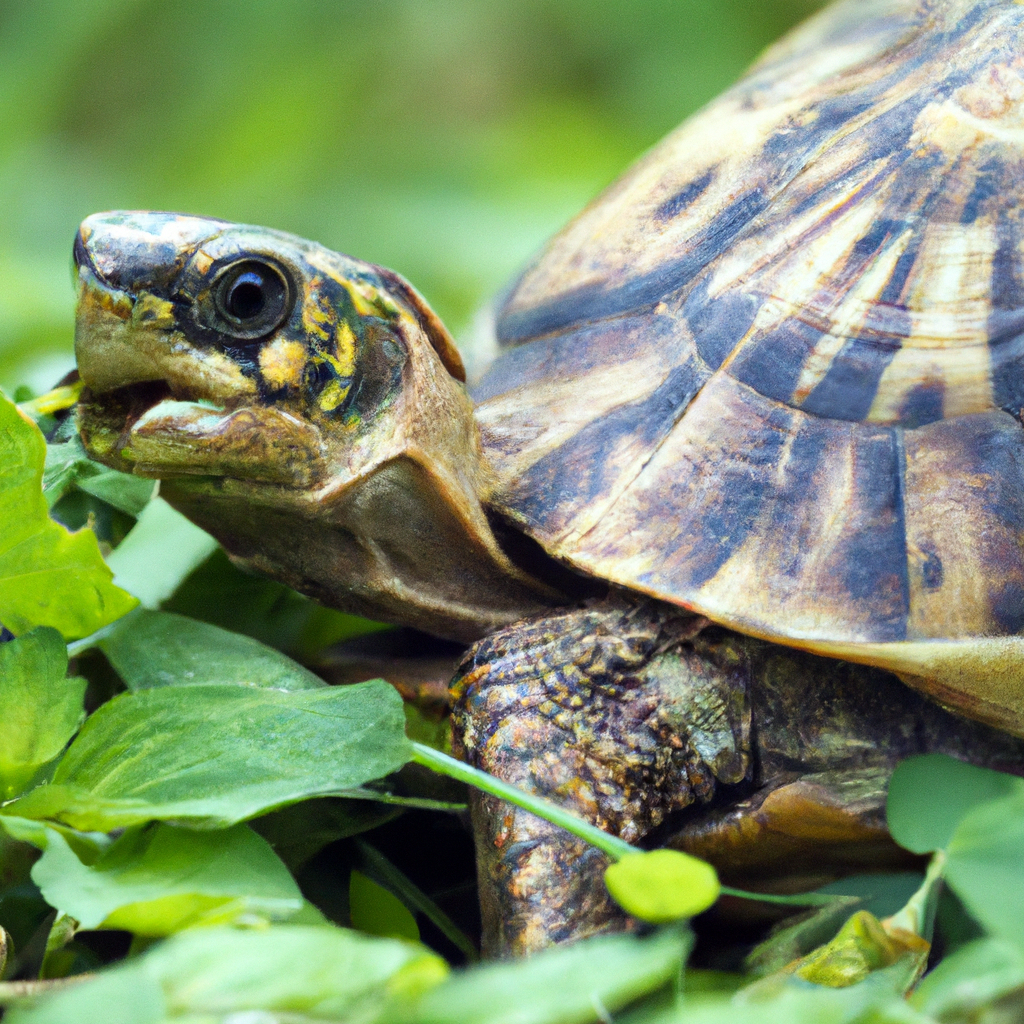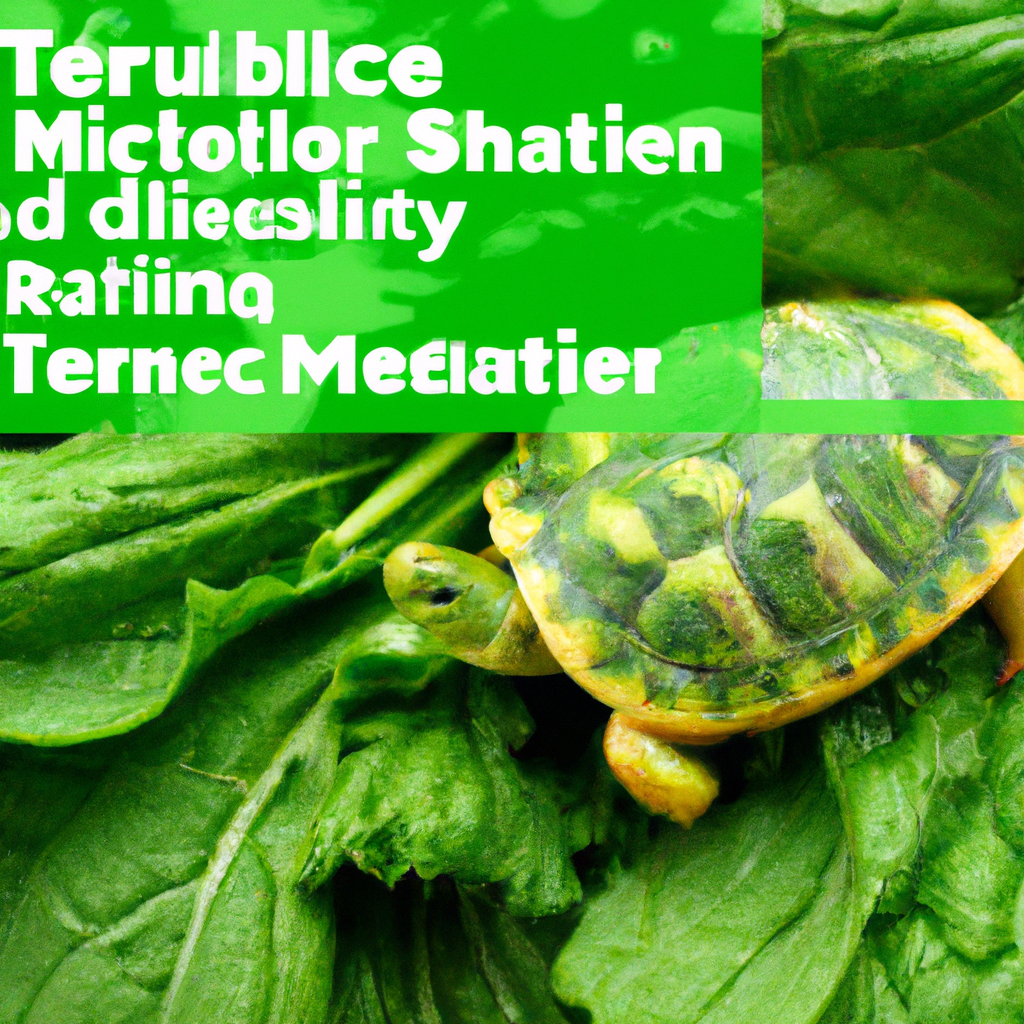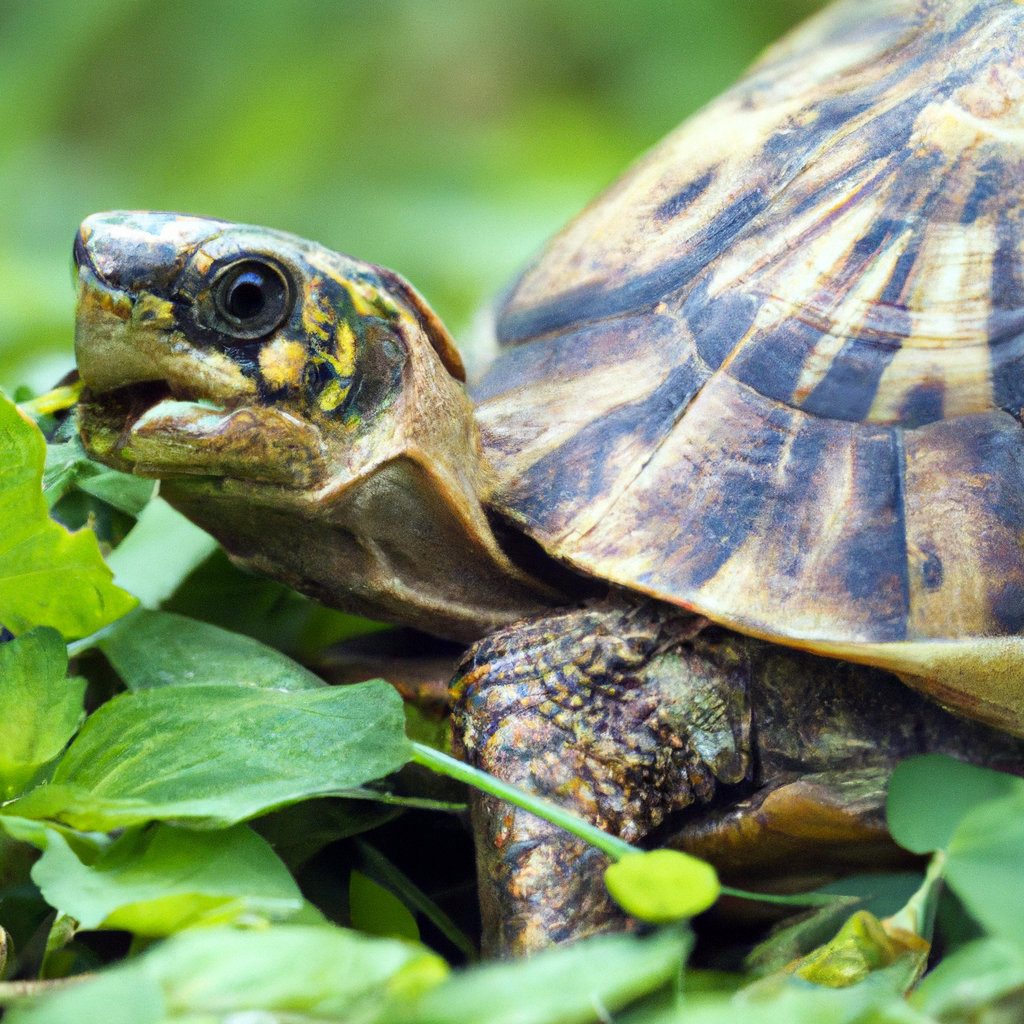You’ve probably noticed that owning a pet turtle comes with its own unique set of challenges, and one of them involves addressing nutritional deficiencies. It’s important to understand the specific dietary needs of these fascinating creatures in order to provide them with the proper care they deserve. In this article, we will explore why nutritional deficiencies occur in turtles and offer practical tips on how to address and prevent them, ensuring that your turtle stays healthy and happy.

1. Types of Nutritional Deficiencies
1.1 Calcium Deficiency
One of the most common nutritional deficiencies in turtles is a lack of calcium. Calcium is crucial for maintaining strong bones, proper muscle function, and overall health. Without sufficient calcium, turtles may exhibit shell deformities, weak bones, and fractures. It is important to ensure that turtles have access to a calcium-rich diet and adequate sunlight exposure to support proper calcium absorption.
1.2 Vitamin Deficiencies
Turtles require a variety of vitamins for their overall well-being. Vitamin deficiencies can occur if turtles are not provided with a balanced and varied diet. Vitamin A deficiency, for example, can lead to issues with vision and respiratory function. Vitamin D deficiency can result in weak bones and shell deformities. It is important to include a range of vitamin-rich foods in the turtle’s diet to prevent these deficiencies.
1.3 Protein Deficiency
Protein is essential for growth, tissue repair, and the development of a healthy immune system in turtles. Insufficient protein intake can lead to poor growth, weakened immune response, and delayed healing of wounds. Including protein sources such as insects, fish, and commercial turtle pellets can help prevent protein deficiencies in turtles.
1.4 Fibre Deficiency
Fibre is necessary for proper digestion and bowel movements in turtles. Without enough fibre in their diet, turtles may experience constipation or other digestive issues. Providing fibrous foods such as leafy greens and vegetables can help maintain a healthy digestive system in turtles.
1.5 Mineral Deficiencies
Turtles require various minerals for their physiological processes. A lack of essential minerals like iron, zinc, and magnesium can lead to metabolic imbalances and weakened immune function. Offering a varied diet that includes mineral-rich foods can help prevent mineral deficiencies in turtles.
2. Causes of Nutritional Deficiencies
2.1 Incorrect Diet Composition
One of the main causes of nutritional deficiencies in turtles is an incorrect diet composition. If turtles are not provided with a balanced mix of foods that meet their specific nutritional needs, they may be at risk for deficiencies. It is important to research and understand the dietary requirements of your turtle species and ensure that their diet is appropriately composed.
2.2 Insufficient Feeding
Another common cause of nutritional deficiencies is insufficient feeding. Turtles require regular and adequate feeding to meet their energy and nutrient requirements. Failure to provide enough food can result in malnutrition and deficiencies in essential nutrients. It is essential to establish a feeding schedule and monitor the amount of food your turtle consumes.
2.3 Poor Gut Health
Turtles rely on a healthy gut microbiome to properly digest and absorb nutrients. If the gut health is compromised, it can lead to poor nutrient absorption and deficiencies. Factors such as stress, improper diet, or antibiotic use can disrupt the gut microbiome. Maintaining a balanced and appropriate diet, avoiding unnecessary medication, and providing a stress-free environment can help promote good gut health in turtles.
2.4 Lack of Sunlight Exposure
Sunlight exposure is crucial for turtles as it allows them to produce vitamin D, which is essential for calcium absorption. If turtles do not receive enough sunlight exposure, either due to indoor housing or limited outdoor access, they may be at risk for vitamin D deficiency and related calcium deficiencies. Providing UVB lighting or allowing supervised outdoor time can help address this issue.
2.5 Environmental Factors
Environmental factors, such as temperature and humidity, can influence a turtle’s metabolism and nutrient requirements. Inadequate temperature regulation or excessively dry or humid environments can affect a turtle’s ability to properly absorb and utilize nutrients. Maintaining appropriate environmental conditions for your turtle’s species is important to support their overall health and prevent nutritional deficiencies.
3. Symptoms and Effects of Nutritional Deficiencies
3.1 Shell Deformities
One of the noticeable effects of nutritional deficiencies in turtles is the development of shell deformities. Calcium and vitamin deficiencies can cause the shell to become soft, misshapen, or develop abnormal growth patterns. These deformities can affect the turtle’s mobility and overall health.
3.2 Soft Shell
A soft shell is a common symptom of calcium deficiency in turtles. Without sufficient calcium, the shell lacks proper structure and becomes pliable. This can make the turtle more vulnerable to injuries and infections and can affect their ability to support their body weight.
3.3 Bone Weakness and Fractures
Nutritional deficiencies, particularly in calcium and vitamins, can weaken the bones of turtles. Weak bones make turtles more susceptible to fractures, which can be painful and impair their mobility. Regular veterinary care, along with a proper diet, is essential to prevent bone weaknesses and fractures.
3.4 Weak Immune System
Turtles with nutritional deficiencies often have weakened immune systems, making them more susceptible to infections and diseases. A compromised immune system can result from protein or vitamin deficiencies, hindering the turtle’s ability to fight off pathogens. Adequate nutrition is necessary to maintain a strong immune response in turtles.
3.5 Poor Growth and Development
Nutritional deficiencies can severely impact the growth and development of turtles. Insufficient protein, vitamins, and minerals can lead to stunted growth, improper skeletal development, and delayed maturation. Providing a balanced and nutrient-rich diet is crucial during the growth stages of a turtle’s life.
4. Diet and Nutritional Requirements
4.1 Balanced Diet for Turtles
A balanced diet for turtles should include a variety of foods to meet their specific nutritional requirements. Leafy greens, vegetables, fruits, insects, fish, and commercial turtle pellets should be incorporated into their diet. Different turtle species may have specific dietary needs, so it is important to research and provide appropriate foods accordingly.
4.2 Essential Vitamins and Minerals
Turtles require various vitamins and minerals for optimal health. Vitamin A, vitamin D, calcium, and phosphorus are particularly important. These nutrients can be included in the diet through sources such as dark leafy greens, carrots, fish, and calcium supplements. Understanding and providing the necessary vitamins and minerals are vital to prevent deficiencies.
4.3 Protein Sources
Protein is a crucial component of a turtle’s diet. Insects like crickets and mealworms, as well as small fish and commercially available turtle pellets, can provide the necessary protein. The protein sources should be appropriately sized for the turtle and offered in moderate amounts to prevent overfeeding.
4.4 Calcium Supplements
To ensure turtles receive sufficient calcium, calcium supplements can be added to their diet. Calcium powder or cuttlebone should be provided regularly to support proper shell and bone health. Consult with a veterinarian to determine the appropriate dosage and frequency for calcium supplementation.
4.5 Fiber Sources
Fiber is essential for the digestive health of turtles. Leafy greens, vegetables, and occasional fruits can provide the necessary fiber. It is important to offer a variety of fiber sources to ensure a healthy digestive system and prevent constipation.

5. Identifying Nutritional Deficiencies
5.1 Veterinary Consultation
If you suspect your turtle may have a nutritional deficiency, it is recommended to consult a veterinarian who specializes in reptiles. A veterinarian can conduct a thorough examination and provide guidance on diagnosing and addressing the deficiencies.
5.2 Physical Examination
During a physical examination, a veterinarian will assess the overall condition of the turtle, including shell and bone health. They may also check for signs of malnutrition, such as poor body condition or muscle wasting. Physical examination is an important step in identifying nutritional deficiencies.
5.3 Laboratory Tests
In some cases, laboratory tests may be necessary to confirm nutritional deficiencies. Blood tests can assess the levels of specific nutrients, such as calcium or vitamins, in the turtle’s body. These tests can help determine the severity of the deficiency and guide the treatment plan.
5.4 Observation of Behavioral Changes
Observing changes in your turtle’s behavior can provide valuable insights into potential nutritional deficiencies. Look for signs such as decreased appetite, lethargy, or changes in activity level. Behavioral changes, along with other symptoms, can help in identifying possible deficiencies.
5.5 Shell and Bone Examinations
Shell and bone abnormalities are often visible signs of nutritional deficiencies. A careful examination of the turtle’s shell and bones can reveal deformities, soft spots, or weakness. Regularly inspecting your turtle’s shell and bones can help identify deficiencies early on.
6. Treating Nutritional Deficiencies
6.1 Dietary Changes
Treating nutritional deficiencies in turtles often involves making dietary changes. A vet may recommend adjusting the composition of the turtle’s diet to address specific deficiencies. This may involve increasing the intake of certain nutrients, such as calcium or proteins, through appropriate food choices.
6.2 Calcium and Vitamin D Supplementation
For turtles with calcium and vitamin D deficiencies, supplementation may be necessary. Veterinarians may prescribe specific calcium and vitamin D supplements to ensure the turtle receives adequate amounts. It is important to follow the veterinarian’s instructions regarding dosage and administration.
6.3 Protein and Fiber Enhancement
To address protein or fiber deficiencies, veterinarians may recommend adding appropriate protein or fiber sources to the turtle’s diet. This can include increasing the amount of insects, fish, or leafy greens provided. Care should be taken not to overfeed or introduce new foods too quickly, as this can cause digestive upset.
6.4 Gut Health Improvement
Addressing gut health is essential for the proper absorption and utilization of nutrients. Probiotic supplements or dietary changes that promote a healthy gut microbiome may be recommended. Providing a stress-free environment and minimizing medication use can also contribute to improved gut health.
6.5 Environmental Modifications
In some cases, environmental modifications may be necessary to address nutritional deficiencies. This can include optimizing temperature and humidity levels to support proper digestion and nutrient absorption. Consult with a veterinarian to ensure the turtle’s environment is suitable for their nutritional needs.
7. Preventing Nutritional Deficiencies
7.1 Providing a Varied Diet
To prevent nutritional deficiencies, it is crucial to offer a varied diet that meets the specific nutritional needs of your turtle species. Including a mix of vegetables, fruits, insects, and appropriate commercial turtle pellets can provide a wide range of nutrients.
7.2 Ensuring Adequate Feeding
Regular and adequate feeding is key to preventing nutritional deficiencies. Follow recommended feeding guidelines for your turtle species and monitor their appetite and body condition. Adjust the amount of food offered accordingly to meet their energy and nutrient requirements.
7.3 Proper Gut Health Management
Maintaining a healthy gut microbiome is important for overall nutrient absorption and utilization. Providing a balanced diet, avoiding unnecessary medication, and minimizing stress can promote good gut health in turtles.
7.4 Vitamin and Mineral Supplements
In addition to a varied diet, some turtles may benefit from vitamin and mineral supplements. These supplements should be recommended by a veterinarian and used according to their instructions. Remember, supplements should never replace a balanced diet but serve as a complement to it.
7.5 Sunlight Exposure and Temperature Regulation
Turtles require adequate sunlight exposure to produce vitamin D, which is crucial for calcium absorption. If providing natural sunlight is not possible, UVB lighting should be used to mimic natural sunlight. Additionally, maintaining appropriate temperature levels in the enclosure can support the turtle’s metabolism and nutrient utilization.
8. Importance of Regular Veterinary Check-ups
8.1 Early Detection of Deficiencies
Scheduling regular veterinary check-ups for your turtle is essential for early detection of nutritional deficiencies. A veterinarian can assess the turtle’s overall health and conduct tests to identify deficiencies before they become severe.
8.2 Professional Dietary Recommendations
Veterinarians specialized in reptile care can provide professional dietary recommendations based on your turtle’s species and specific needs. They can guide you on the appropriate food choices, feeding schedule, and supplementation to support optimal nutrition.
8.3 Preventive Measures
Regular veterinary check-ups allow for the implementation of preventive measures against nutritional deficiencies. By monitoring the turtle’s health and examining their diet, a vet can identify and address potential issues before they escalate.
8.4 Monitoring Health and Progress
Through regular veterinary check-ups, the overall health and progress of the turtle can be monitored. Any changes in their behavior, diet, or health can be assessed and addressed promptly to prevent or treat nutritional deficiencies.
8.5 Addressing Underlying Health Issues
Regular veterinary check-ups also enable the identification and treatment of underlying health issues that may contribute to nutritional deficiencies. By addressing these underlying issues, the turtle’s overall health and nutritional status can be improved.
9. Case Studies
9.1 Case Study 1: Calcium Deficiency in a Red-Eared Slider
In this case study, a red-eared slider turtle was presented with a soft and deformed shell. After a thorough examination and blood tests, the veterinarian determined that the turtle had a severe calcium deficiency. The treatment plan included dietary changes to incorporate calcium-rich foods and the addition of a calcium supplement. With regular monitoring and appropriate treatment, the turtle’s shell improved, and its overall health was restored.
9.2 Case Study 2: Vitamin Deficiencies in a Box Turtle
A box turtle exhibited signs of vitamin deficiencies, including poor growth and dull skin. Upon evaluation, the veterinarian diagnosed the turtle with vitamin A and vitamin D deficiencies. The treatment involved adjusting the diet to include vitamin-rich foods, such as dark leafy greens and liver, and providing vitamin supplements. With proper nutrition and regular veterinary check-ups, the turtle’s growth and appearance improved significantly.
9.3 Case Study 3: Protein Deficiency in an African Sideneck Turtle
An African sideneck turtle presented with slow growth and frequent infections. Laboratory tests revealed a protein deficiency. The veterinarian recommended increasing the intake of protein sources such as fish, insects, and commercial turtle pellets. With a balanced and protein-rich diet, the turtle’s growth improved, and its immune system became stronger, resulting in fewer infections.
9.4 Case Study 4: Malnutrition and Shell Deformities in a Spiny Softshell Turtle
A spiny softshell turtle was brought to the veterinarian with severe malnutrition and deformed shell. The turtle was not receiving a balanced diet and lacked essential nutrients. The treatment plan involved dietary changes, including a diverse mix of high-quality food items, calcium supplementation, and UVB lighting. Over time, the turtle’s health improved, and the shell deformities gradually resolved.
9.5 Case Study 5: Nutritional Imbalance in a Painted Turtle
A painted turtle exhibited behavioral changes, including decreased appetite and lethargy. Upon examination, the veterinarian discovered a nutritional imbalance, particularly in regards to calcium and vitamins. The treatment plan included dietary adjustments, calcium supplementation, and multivitamin use. With the correct nutritional balance, the turtle’s appetite returned, and its activity level improved.
10. Conclusion
Nutritional deficiencies in turtles can have serious health implications, impacting their shell, bones, immune system, and overall well-being. Identifying the types, causes, and symptoms of nutritional deficiencies is crucial for their timely prevention and treatment. Through a balanced diet, proper husbandry, regular veterinary check-ups, and addressing underlying health issues, turtle owners can ensure the optimal nutrition and long-term health of their beloved pets.
